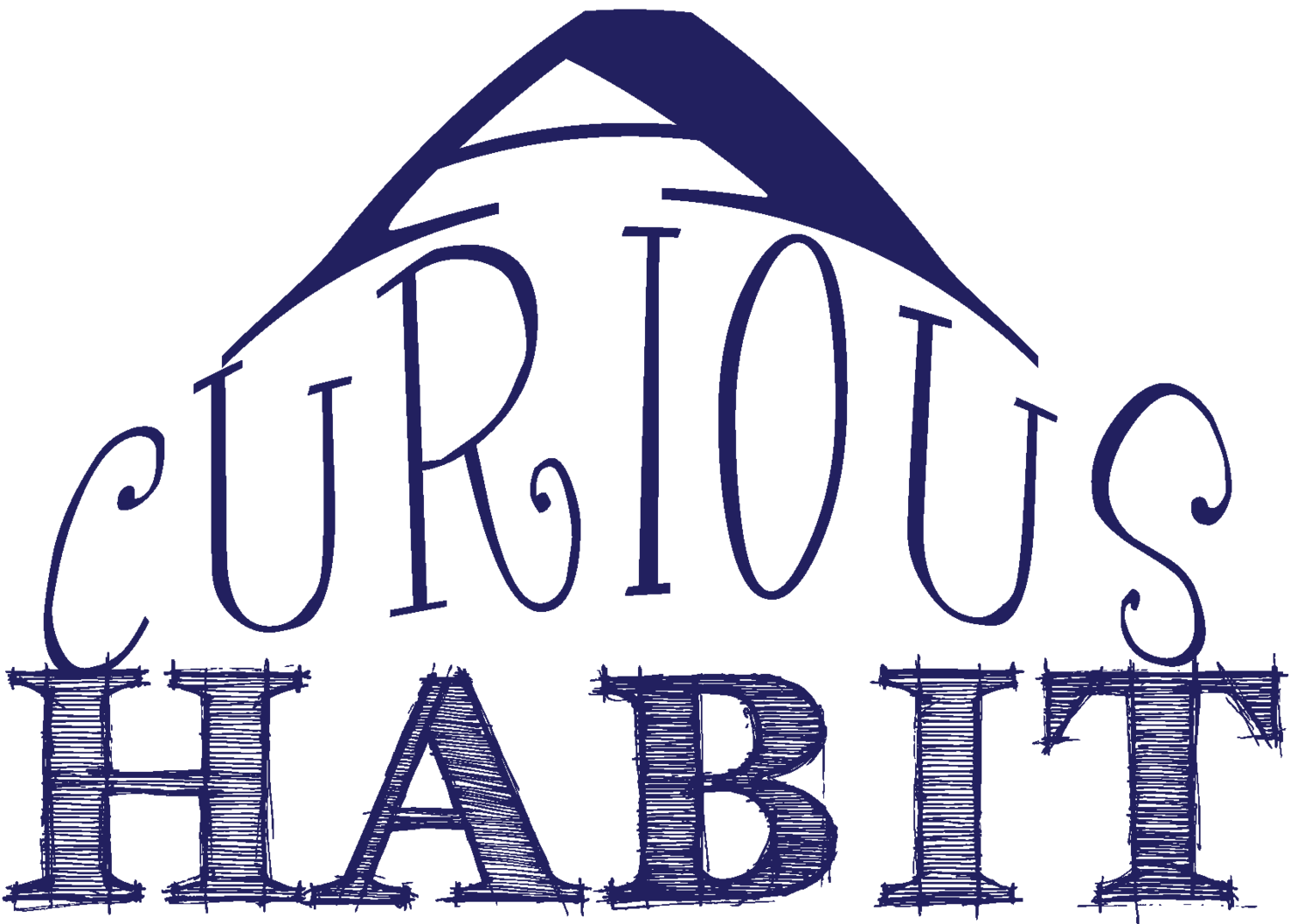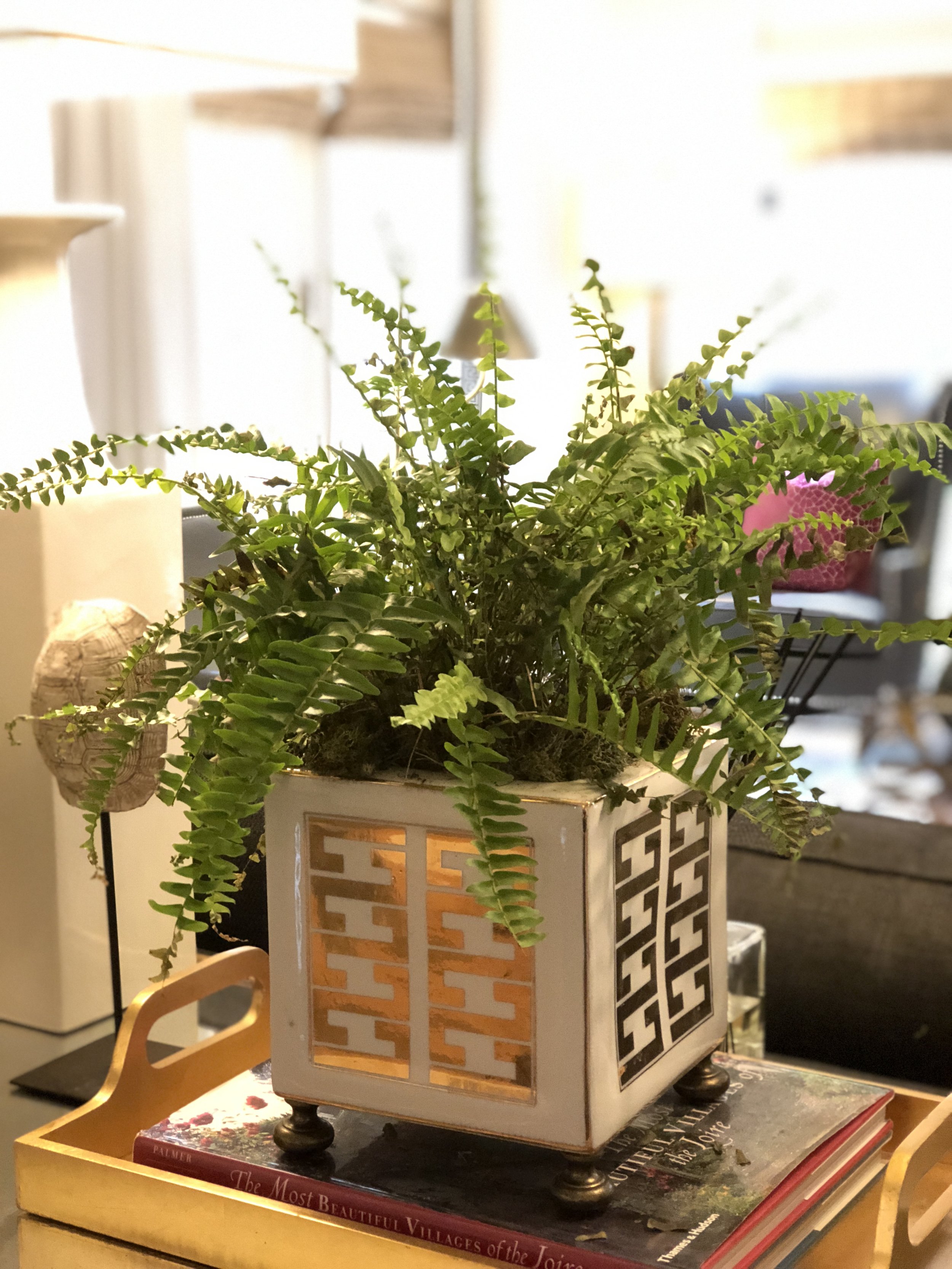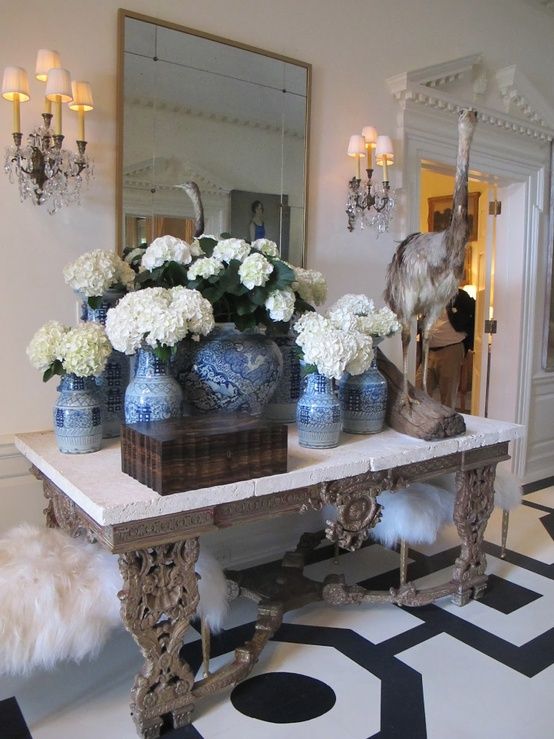The Plantcessory Principle
Last November (that is, Nov 2016), I bought some little myrtle topiaries at bb interiors, right here in Geneva. I know what you’re thinking: Again with the topiaries?!
Patience, please. I do have a point, which I will get to forthwith.
As I was saying, I bought these small myrtle topiaries from bb interiors which are intended for indoor use. I don't need a dolly to move them, which is a relief, because, as I mentioned in this post, that was a j-o-b.
Ian Essex, designer extraordinaire and my friend at bb interiors, turned me on to these tabletop myrtles last year. I was going to buy one anyway, but Ian showed me pictures of the topiary farm that he personally visited to hand-pick the topes for the store. You heard it: Topiary.Farm. Two of my favorite words in the English language. How could I resist? I bought two. That was last November. Fast forward to two weeks ago, when I proudly showed Mr. Ian Essex, whose own topiaries have since bitten the proverbial dust, pictures of my still-living, still-thriving topes. He was pretty impressed, I think. I live to impress Ian.
Above: My little myrtles, thriving in my kitchen window. Could do with a haircut, guys.
It occurs to me that I have gradually moved my gardening indoors since moving to the Midwest. I never did that in warmer climates. Of course, you can practically start gardening in late February in Louisiana, so why bother with houseplants?
I’ll tell ya why. They add texture and life. They clean the air (or maybe that’s a myth?) They are great, inexpensive filler, and they last forever. Mainly, they look real darn pretty, which is reason enough for me.
Besides giving me something to grow (nurture? obsess over?) during the long, cold, snowy Midwestern winter, houseplants have morphed into something more for me. I’ve started to think of plants like accessories. Plantcessories, if you will. For a visual aide, consider the genius that is Mark D Sikes. Aside from his insanely pretty-and-practical new trad decorating style (that's a different post), he uses houseplants in the most strategic - nay, intentional - way. I have tried to picture these rooms sans plants, and while they would still be gorgeous, I feel like they might look naked. (That’s nekked, if you’re Southern.)
“I adore simple greenery - ferns, boxwoods, potted herbs, ficus alii, green hydrangea, and myrtle topiaries are the plants I use most often.”
Houseplants, like most things, have their moments of fame. The fiddle-leaf fig, for example, is having a moment. If you keep in mind the houseplant-as-accessory principle - The Plantcessory Principle, choosing and placing houseplants gets exponentially easier.
I have experimented for the better part of a year, to see what works with my style, and my abilities. At one point, I had a little fern graveyard out under the lilacs. As with anything, there’s a learning curve for indoor gardening. (Am I the only one who takes it personally when a plant doesn’t thrive under my care? It hurts to throw away a struggling fern, y’all.) I've read, however, that designers like Mark D Sikes, who use ferns as accessories, advise treating them like cut flowers. In other words, don't sweat it if you have to toss them after a few weeks (or months, in my case). They are inexpensive enough to replace regularly. (Around $6.)
I have narrowed down my list of Plantcessories to these top three pretty, decor-enhancing, and easy (enough) houseplants: myrtle topiaries, ferns, and orchids. (For larger plants, like the ubiquitous fiddle-leaf fig, I prefer really good silks. A sacrilege, I know. But, they're not finicky like real ones, and they're quite life-like.) I've covered topiaries ad nauseam, so I'll skip to a word on ferns. While I grow plenty of garden-variety ferns, I've discovered of late that kangaroo-foot ferns are quite interesting and sculptural, and actually do really well inside. I'm a fan.
Pictured above: My current ferns and orchid.
For color, I prefer orchids in bloom, which I buy at my local Home Depot (gasp!). Yes, you read that correctly. I am not interested in growing orchids. It’s a lengthy process, and an orchid without blooms is a hideous looking thing. However, The Home Depot offers a lovely variety of colors and sizes; plus, orchid blooms last forever, and require almost no care. You give them an ice-cube-sized amount of water every week. Or not. Toss them when they quit blooming. Compared to fresh flowers, you get more bloom for your buck with orchids, and they don’t sit in stinky, stagnate water. Plus, they're simple and dignified.
A final word on Plantcessorizing: All houseplants are not created equal. Some of them are just not pretty. Some get leggy, like pothos ivy. Some are temperamental and not worth the effort. And, news flash, too many houseplants is just a hot mess! I figure, if a plant is not additive in any way to your design scheme, skip it. Here's my simple guide to plantcessorizing:
- Start small: Experiment until you know your indoor gardening abilities.
- Less is more: Plantcessorize like you accessorize. Use houseplants strategically and intentionally.
- Consistency over variety: Repeating a single plant looks more orderly and planned than a menagerie.
- Compliment your interior design style: Use plants appropriate to your style. For example, succulents may not pair well with traditional accessories, just as topiaries might seem out of place in an ultra-modern setting.
- Enjoy the journey: Learn, and stay curious!
Images courtesy of Mark D Sikes






















